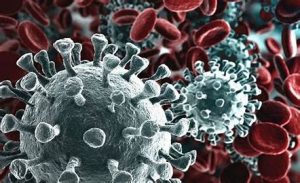
Coronavirus
Coronaviruses are a family of viruses that can cause illnesses such as the common cold, severe acute respiratory syndrome (SARS) and Middle East respiratory syndrome (MERS). In 2019, a new coronavirus was identified as the cause of a disease outbreak that originated in China.
The virus is now known as the severe acute respiratory syndrome coronavirus 2 (SARS-CoV-2).
COVID-19 symptoms include cough, fever or chills, shortness of breath or difficulty breathing, muscle or body aches, sore throat, new loss of taste or smell, diarrhea, headache, fatigue, nausea or vomiting and congestion or runny nose. Older adults and people who have severe underlying medical conditions like heart or lung disease or diabetes seem to be at higher risk for developing serious complications from COVID-19 illness. COVID-19 can be severe, and some cases have caused death.
The new coronavirus can be spread from person to person. It is diagnosed with a laboratory test.
*PCR Test: nasal swab that looks for pieces of SARS-CoV-2 to determine if the person has an active infection.
*Antigen Test: nasal swab that looks for pieces of proteins that make up the SARS-CoV-2 virus to determine if the person has an active infection.
*Antibody (Serology) Test: blood sample that looks for antibodies against SARS-CoV-2 in the blood to determine if there was a past infection.
Social distancing (6 feet apart) and the use of facial masks are strongly advsied to reduce the risk of infection.
For additional information, please refer to the CDC.